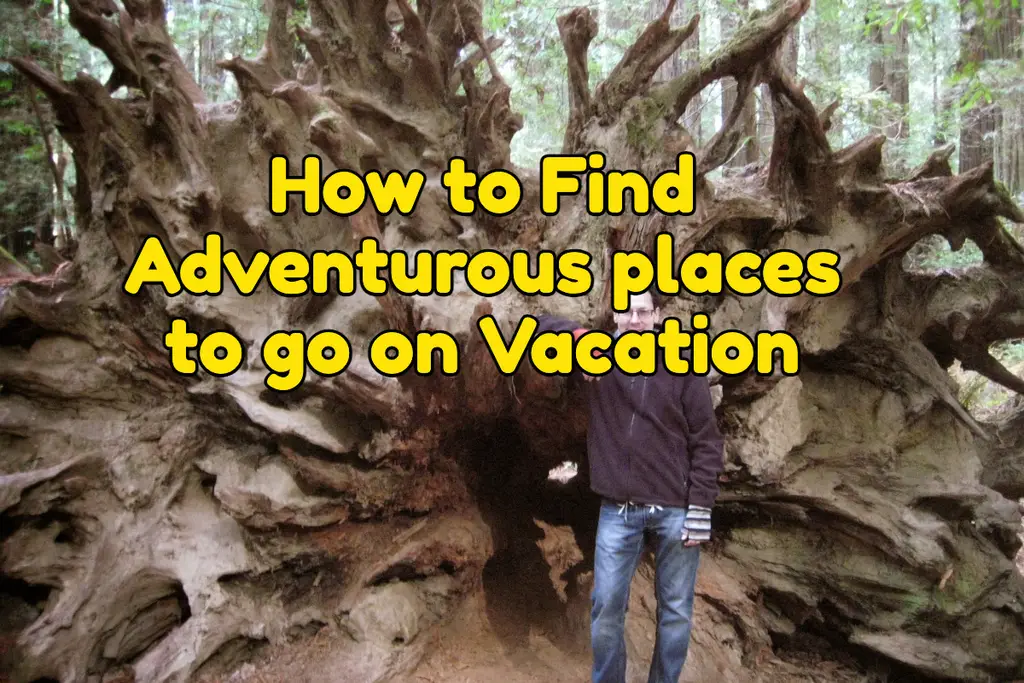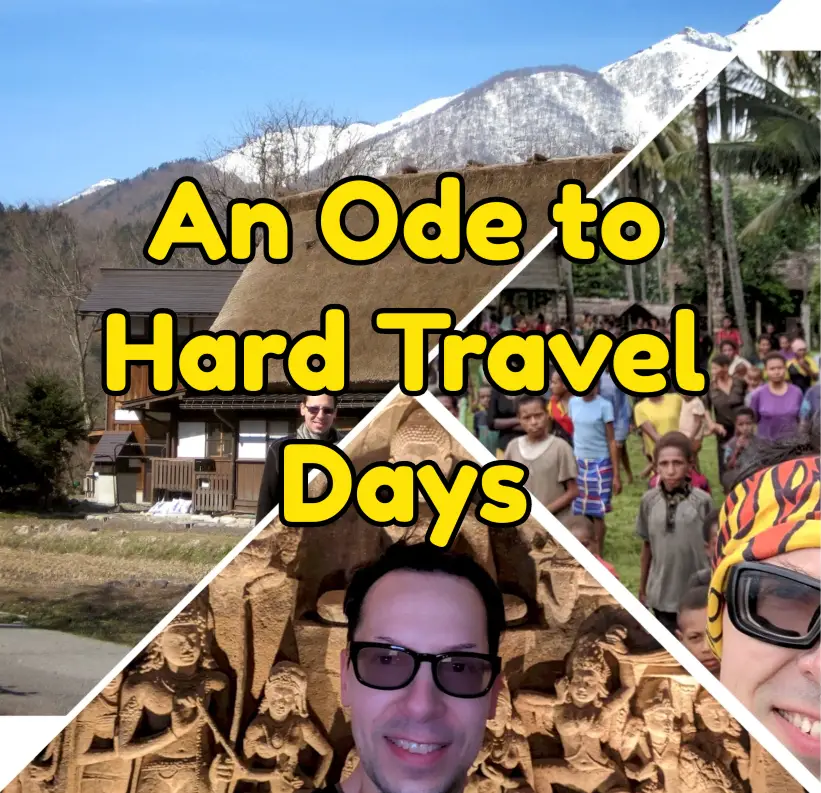
Overall, finding adventurous places to go relies on what adventurous travel is. To me, adventurous travel is going to those places that are away from most tourist areas, and require something difficult – whether that is just getting there or a major hike and of course a location that offers something special and unique.
When planning a vacation Itinerary I’m often aware of the possibility of visiting a place that I call remote and adventurous. In Papua New Guinea I visited Lake Murray and the Karawari River, in Japan I visited Shirakawago, In Peru I visited Lake Titicaca and wherever I go I seek out those potential adventures.
The question I always get from fellow adventurers is, how did you decide to go THERE? How did you find out this place even existed? Today I am going to reveal those secrets through an example trip – India where I used a technique called RIBOM.
When planning out my India itinerary, I was happily aware that I would be able to add week to our more regular India tourist trip. I was equally excited for both and but here I will discuss how I decided to go where I did for the adventure portion of the trip
What is RIBOME?
RIBOME is an acronym to help you remember the technique for planning an adventurous itinerary. In short RIBOME represents the 6 steps to planning an adventure.
R = Located Recognized remote places
I = Get Inspired
B = Books
O = Official channels
M = Map it out
E = Eliminate
India Adventure Week Itinerary
With one additional week to work with before my wife would join me in Delhi India, I wanted to take the opportunity to see the more remote places in India that most people would never even consider. I needed to make sure that I could use Delhi India as a jumping-off point, and that with jet-leg I would be able to handle it.
So I researched, and to be clear my idea of adventure is NOT simply skydiving, bungee jumping or white water rapids – I can do that anywhere! My idea of adventure is to go to an area where foreign tourists don’t go, to see things that are ancient, remote, and unique. Or at least unique to me.
Methodology – How to Find Unique Places to Go
Find Special and Remote Places to Go
Step 1: Officially recognized remote places worth your time
R of RIBOME = Recognized Remote Places
The first step for me is to visit the Unesco World Heritage site, as they have a huge list of special places by country and they tell you what makes them special. They typically have a large variation of places that they list from the regal and highly trafficked historic center of Florence to the isolated Socotra Archipelago. The point of looking at Unesco is to ignore the more popular tourist sites and dig into the more remote heritage sites for ideas.
At the Unesco site, I found a few things to explore deeper. It was here that I first discovered Ellora and Ajanta Caves. Ellora and Ajanta Caves are a cheap flight from Delhi India and a relatively short car ride from the airport – 0.5 hours to Ellora and 2.5 hours to Ajanta Caves. They are remote, and foreign tourists do not go there. When I was there my guide warned me that most people we would see may never have seen a white person before. Which is precisely what I had hoped for.
Step 2: Getting inspired for remote places to go via Images
I of RIBOME = Inspired Images
My second step is to look for interesting pictures of places in my destination. Today, the vast majority of remote places to visit have photographic evidence of someone who has already been there. This is the benefit of the world wide web.
To do this, I start with Google Image Search with the search term of “remote India”. This is a broad search, so I typically scan a few pages worth of images before I decide to move on. The point is to get inspired, every so often a picture will grab your attention and set you off to learn about a new location. Dig into that research and decide quickly if it is an option that you care about.
The next source for finding remote places using images to go is to use Reddit. Yes, Reddit has lots of junk, we will use search criteria to limit our results. I searched “r/travel” for “India” then I set the period to “all time” sorted the results by “Top” and I used the same criteria in “r/travelphotos/”. I sift through the results, which are mostly pictures with descriptions of places that someone went to along with a comment stream and I get inspired.
Some people like to use Atlas Obscura for inspiration, I tend to find that resource better for when I am in a city and looking for something weird to see, but give it a shot if you like.
Using this method, I discovered a remote hike in Cherrapunji India to see amazing natural tree bridges and I learned that getting there would be painful. A flight, followed by an 8-hour drive. Happily, there was another interesting activity to do in that region – see waterfalls, caves, and sacred forests!
Step 3: Books
B of RIBOME = Books
Yes. I’m talking about those giant compendiums by Country by Fodors, Lonely Planet, and Barnes and Noble to find these books and sit down to flip through them. My goal in looking at these books is to scan for places that sound special and off the beaten track to add as an option. I also use these books to look up any remote location I already identified to see what they have to say about it, and if it is listed.
Step 4: More official channels to find remote places to go
O of RIBOME = Official
The last thing that I scan for remote places to go is official tour itineraries. I find these by typing into Google “tour itineraries for India” or “adventure itineraries for India”. Typically an official tour itinerary will not go to remote areas, however, I have found that if you look at the longer tours and scan for activities and locations that interest you that it can reveal a great inspiration for your trip. Scanning the longer tours is important here. The short tours will only have the main tourist attractions, while the longer ones will have itineraries that include the more remote areas of the country.
It was here that I discovered the Thar Desert. The Thar Desert is precisely what it sounds like, a true desert with sand everywhere and with the hope of finding water quite low. I had an interest in the Thar Desert because I have never been to a desert quite like it and felt that perhaps India would be where I would do it.
Step 5: Map those places and Eliminate them!
M of RIBOME = Map
At this point, we have a list of places that look interesting, which is more than the three items that I listed above. At this point, I use Google Maps or Apple Maps to mark each location alongside the main city that I am visiting, in this case, Delhi India.
Visualizing each remote location on a map helps you to keep grounded. If you trek off to a remote area you want to make sure that you get back in time for your flight home or in the city where you will kick off the rest of your vacation. Moreover, some places that you found will be too far away to get to and others will simply require too much time. Use the map as a way to reduce your options and help you choose your best itinerary.
Let me pose the following questions to help eliminate remote places to go
- How much time do you have to work with?
- How far away is it from where the international airport is, or where you will continue your journey?
- Can you drive there?
- Can you fly there? –> How expensive is the flight? How often do planes go there? How far is it from the airport?
- How long do you need to be there to enjoy it, especially if time is limited?
When viewing your possible destinations, these questions will help you to eliminate some of your ideas.
Step 6: Eliminating more remote locations
E of RIBOME = Eliminate
Now you have a smaller list of remote places to go. Let’s get into the nuts and bolts of travel and see what you’re still interested in.
Basics –> How long will it take you to get there and back? Will you need to be driven, are there roads? Is it safe enough for you? Do you need to fly? How much will it cost you? How interesting is the place for you? Is it worth your time?
If you are not happy with the answers to those questions, scratch the remote place off the list.
Developing an itinerary for remote places
Now for the fun part. Of the places that you have left, what else can you do there? Happily, there are plenty of resources available to you for coming up with an itinerary for remote places. I would start with the official tourism page for the city or town that you are visiting to see what they list there. It is in their interest to provide you with ideas on how to spend your time in their region. Of course, if you go somewhere as remote as the jungles of Papua New Guinea there may not be a site, but for most places there is.
If you come up short on ideas on how to expand your itinerary through the towns websites then I highly recommend doing a Google search for “(this town) itinerary”. This should reveal either tour-based itineraries or individual single-day tours being offered. The important thing is to find what you like, what is interesting to you, and what you can do.
Finalizing your trip itinerary
Using those ideas for remote places to go, build out your itinerary, with how you will get there and what you will do, and list the risks. Then let it sit for a few days. Let your mind ponder the possibilities and how hard it may be to do everything that you want to do. If it’s realistic, then go for it! If not, adjust!


